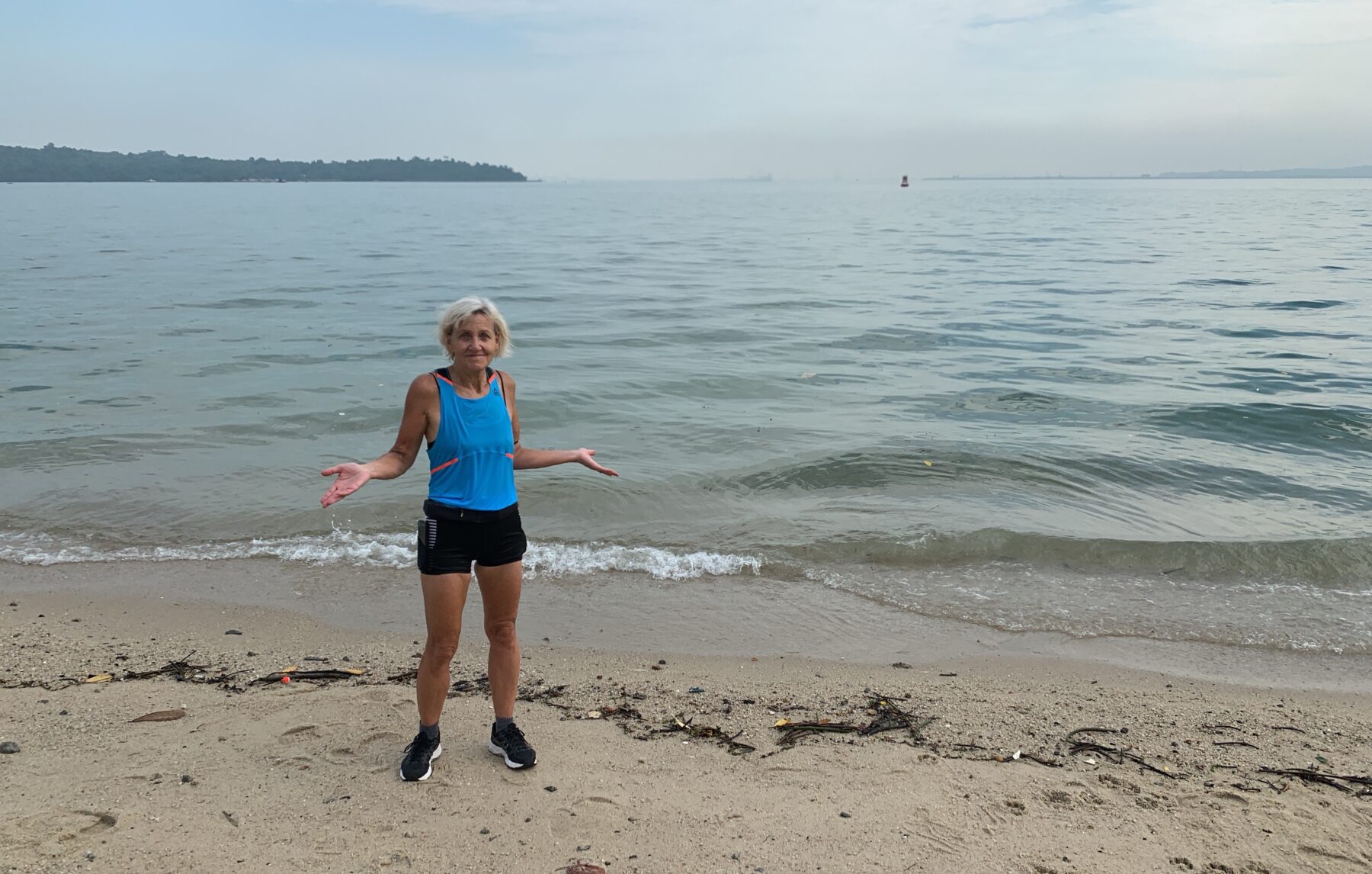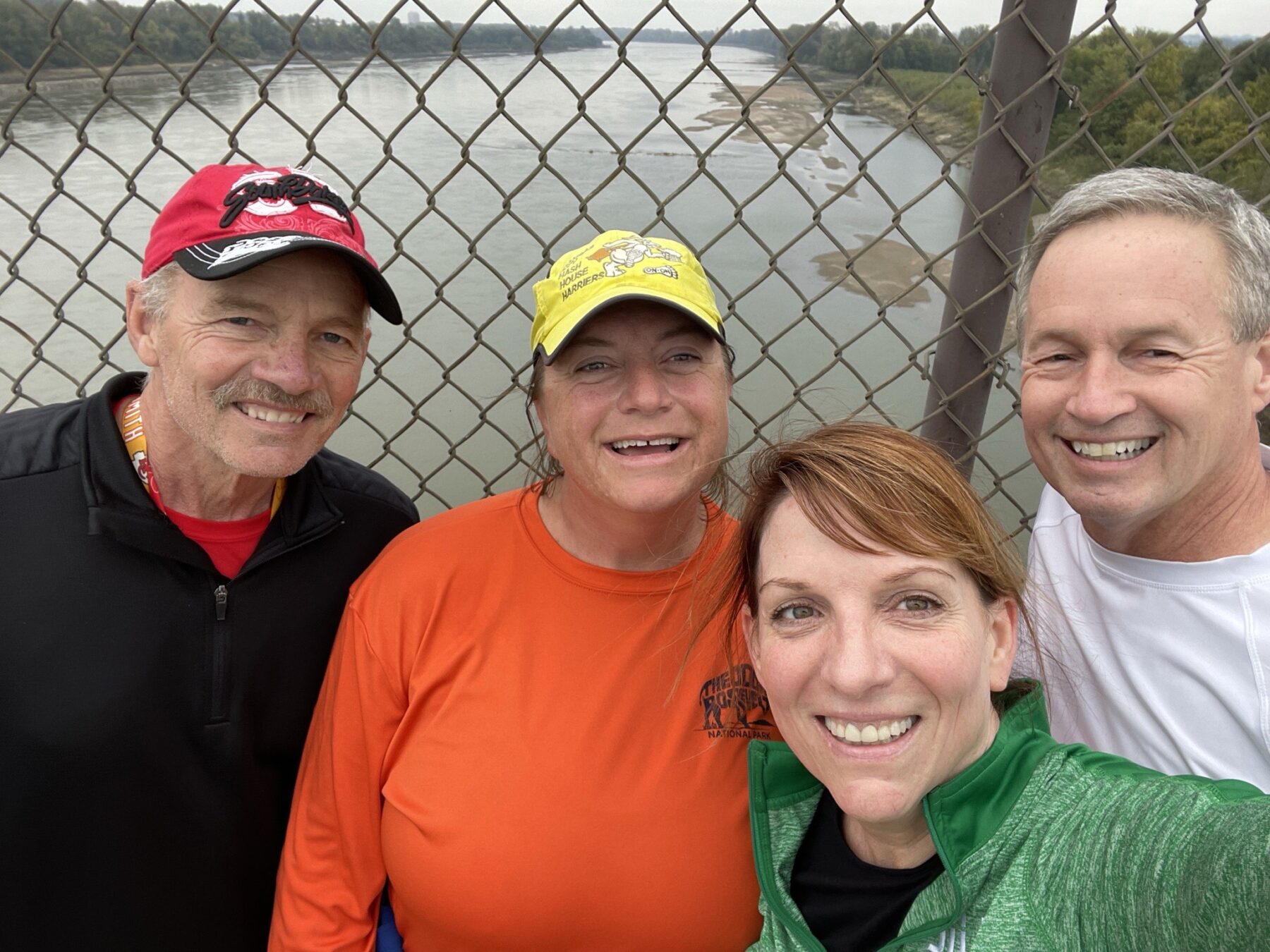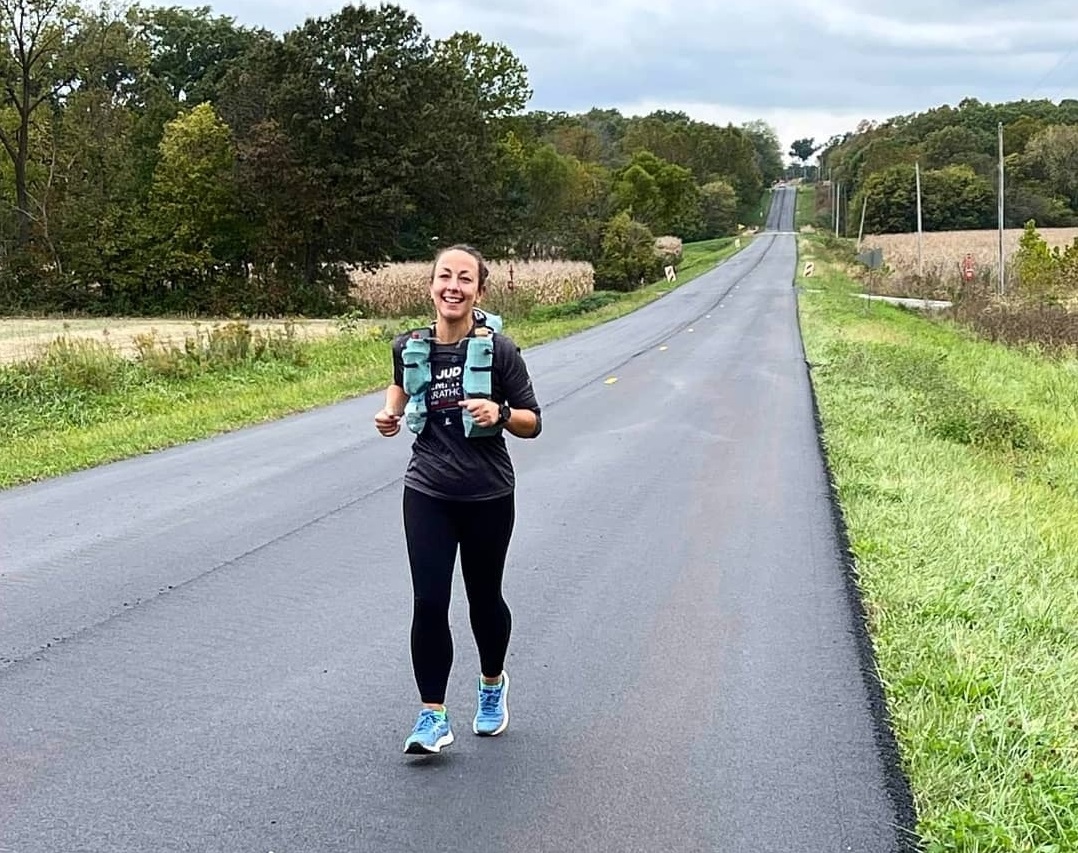Have you ever wondered how far you could run from your front door in 24 hours? Me neither. But now that the question is out there, it does make me think.
In a nutshell, this is the idea behind the 24 Hours from Home (24HfH) Challenge that was launched last spring by St. Louisan Mark Fingerhut — you plan a route, pick 24 hours any time within the three-day event window, and then go for it. When you step outside your door, the clock begins ticking. Whoever walks or run the furthest on a map as the crow flies (ATCF) is declared the winner.
You can imagine the unique concept would appeal to endurance athletes who like to push themselves.
Several dozen locals, some serious and some not-so-serious, have taken the challenge. And many said they’d do it again, despite the grueling nature of a race where the competitor, the clock, the Universe, and the road must work in harmony for one to succeed.
It all started when Fingerhut, an avid runner, was competing in the Missouri River 340 (MR340) paddle race, which typically takes anywhere from 45 to 80 hours to complete. On the river, in the dark of night, possibly a bit delirious from fatigue, he had an idea.
Chatting with his canoe partner about races, Fingerhut thought it would be fun to kidnap willing participants from their homes and make each person find their way back on foot. That notion didn’t stick. But another one did: see who can travel the farthest distance from their home in 24 hours. No vehicles, no wheels, just their own two feet.

Bereth O’Callaghan reaches the end of her journey at the South China Sea in Singapore. (Bereth O’Callaghan)
The idea sprang to life last April when Fingerhut launched the first 24HfH. He figured that, since a lot of races were being canceled due to the pandemic, this would be a great alternative to a crowded course.
He put together a website, talked it up to friends and fellow runners, and got his wife, Sara, on board as the race monitor. Twenty-one people competed, some as tandem teams, others going solo.
At the second race held last October, 35 people joined in the fun. Half were repeats.
For the first Challenge, competitors tracked their trip using their own apps. The second time around, though, everyone used RaceOwl, an app that Fingerhut’s friend, John Marble, developed for the MR340. It tracks locations in real time and allows participants to see where their competitors are and see everyone’s finish times and routes.
“That was a gamechanger for us,” Fingerhut said. “Anyone could log in and see where the others are.”
Casinos and Wineries as Motivation
The 24HfH routes and experiences are as varied as the competitors.
Only a few people have lasted the full 24 hours. Most do a 10- or 12-hour gig, pushing themselves to finish a route they planned out in detail, including locations of gas stations and convenience stores to replenish food and water supplies. Most have support teams to track them and show up with coffee, granola bars, and words of encouragement. Those are the serious competitors.
Then you have the less-serious types who are looking for some fun and camaraderie along the way. One group planned its route based on pub stops. Another guy started from his home near Tower Grove and made it across the Mississippi River, where he enjoyed the rest of the day watching NCAA basketball at the Casino Queen. He covered 9 miles (7 ATCF).

Don Hovey, Beth Schneider McEwen, Angela O’Hanlon, and Glenn Hooker cross the Missouri River. (Angela O’Hanlon)
Leah and Josh Wilson won the prize in October for the longest distance ATCF, tandem category. They hit the road from their south St. Louis home at 2 a.m., making as straight a line as possible to their end goal: a winery in DeSoto, 39 miles away.
That afternoon, cold and soaking wet from a driving rain, the pair called it quits. They were 5 miles from the winery, but the last stretch of road had no shoulder, and it was raining so hard they were afraid drivers couldn’t see them.
Another challenge was a shoulder-less bridge over the Meramec River. They sprinted across, thankful that no cars were around at 5 a.m.
The couple said that to reserve energy they walked the uphills and ran the downhills.
“Throughout the run, we motivated each other. Well, mainly he was motivating me,” Leah laughed.
“I wanted to get to the winery quicker,” Josh responded. “There comes a point when walking on the highway that everything looks the same, so I wanted to move a little faster to change the scenery.”
Efficiency Versus Isolation
Fingerhut participated in the Challenge himself in April. He completed 74 miles (54 miles ATCF).
He left his Dogtown home at 1:30 p.m., headed south, and cut across the JB bridge into Illinois, which he called a harrowing experience with cars passing at 65 mph. He walked overnight, took a half-hour nap at 4 a.m., and finished at 1:30 p.m. in Chester, Illinois.
A friend and cousin met him at various points to bring food, coffee, a change of socks.
“My cousin ran with me for a few miles. It was good to have that as a morale booster,” Fingerhut said.
He did most of his planning on Google maps, which allowed him to gauge traffic.
“My route wasn’t the most efficient,” Fingerhut admitted. “I ran calculations to see who had the most efficient routes. I was on the lower end of the spectrum. But I liked my route because it was isolated. I wasn’t dealing with cars flying past me in the middle of the night.”

Kristi Pashia finished second in the October 2021 24HfH Challenge.
Belleville resident Kristi Pashia nabbed second place in the individual category at the October event, clocking in at 69.1 miles ATCF. She did it in 22 hours.
She left home at 4 p.m., made her way to IL-177, and headed due east, her dog Piper acting as her running mate until mile 9. “That was enough miles for her,” Pashia said.
For much of the route, Pashia’s friends took turns running with her. Overnight, for her safety, was the most critical time to have companions. A few would join at a time, then drop off as others arrived.
“My husband, Sean, shuttled people for me. He did hours and hours of driving to get people back to their cars,” she said.
The next day, at mile 45, Pashia was out of food and very low on water. That’s when she decided to walk.
“I knew if I ran, I would need more water, and the next gas station was too far — mile 55 or 58. I walked and walked, and finally got to the gas station,” where the potato chips were the best she’d ever tasted.
Pashia tapped out near a cemetery in Stratton, Illinois. Driving home with her husband at 75 mph on the same route she had just run, “was just bonkers. I couldn’t even believe I did it. It didn’t seem real,” she said.
If she does it again, Pashia says she will plan her nutrition better, so she doesn’t run out of fuel. She says the race wasn’t as wildly difficult as she thought it would be. She encourages people to try it.
“Even if you don’t want to do the whole 24 hours, just go out, test yourself, and try it,” she said. “Just walk out your front door and give it a go.”
You’ll have your chance this fall. The next 24HfH Challenge is scheduled for October 6-9, 2022. More information and tales from past events can be found at 24HfHChallenge.com.
Author: Terri Waters is a regular contributor to Terrain Magazine.
Top Image: Josh and Leah Wilson on their 24HfH Challenge. (Tyler Beck Photography)


Leave A Comment